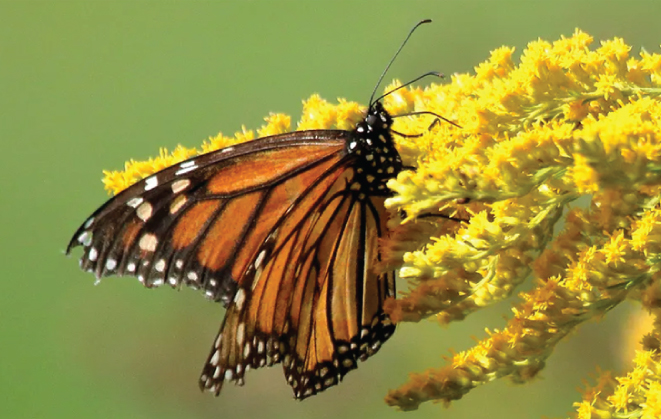Spring wings
A look at our local Lepidoptera (butterfly and moth) species and share some tips on how to protect them.
New conservation tool
One of the ways you could help butterflies and moths in your local area is by creating a space with plants they are attracted to. Chris Cosma, a recent Ph.D. graduate from UC Riverside and now at the Conservation Biology Institute, created an online tool that lets you enter your ZIP code (or address) and the Butterfly Net shows the best native plant species to use in your area. The site works for all of California and ranks the value as host and nectar plants for local butterflies and moths. Some plants can attract dozens of insect species.
Check it out: ctcosma.shinyapps.io/the_butterfly_net
You can click on the image of the site to get to The Butterfly Net as well.
Related Articles
Bird flu is bad for poultry and dairy cows. It’s not a dire threat for most of us — yet
‘The world in motion’: Bird migration peaks over Bay Area in first week of May
Did a Southern California rattlesnake hitch a ride to Walnut Creek?
A unique Bay Area wildlife refuge is beginning to thrive again — but its most fascinating endangered species is still in peril
California has cicadas, too. Here’s what they’re up to in this bumper year.
When it comes to creating plantscapes that help, another UC Riverside entomologist, Erin Wilson Rankin said, “In garden settings, a diversity of sages (we like to use a mix of black sage, hummingbird sage and Sonoma sage) and mallows (chaparral mallow, desert mallow, and Indian mallow). California buckwheat is a pollinator crowd pleaser, as is encelia. For trees/shrubs, lemonadeberry and sugarbush are great nectar plants.”
Bees get well-deserved credit as pollinators in California for all sorts of agribusiness, but they are only part of the story. Butterflies, moths, bats and birds deserve credit too.
Busy at night
In 2023, a report by the University of Sussex discovered that moths are faster pollinators at night than bees and butterflies during the day. Bees and butterflies do the vast majority of pollination but moths have a much quicker pace.
A few butterfly facts
There are 165,000 known species of Lepidoptera (17,500 are butterflies) found on every continent except Antarctica.
Their eyes are made of 6,000 lenses and can see ultraviolet light.
Metamorphosis, where a caterpillar transforms into a butterfly, is completed in 10 to 15 days, depending on the species.
Sources: Erin Wilson Rankin entomologist at UC Riverside, UC Davis Entomology Department, Peter Bryant of UC Irvine, Microscopic image from Scope Tronix, North American Butterfly Association, butterflyconservation.org, “Western Butterflies” Peterson Field guides, iNaturalist.org, San Diego Zoo
Photos: SCNG and David Rankin CC BY-NC


